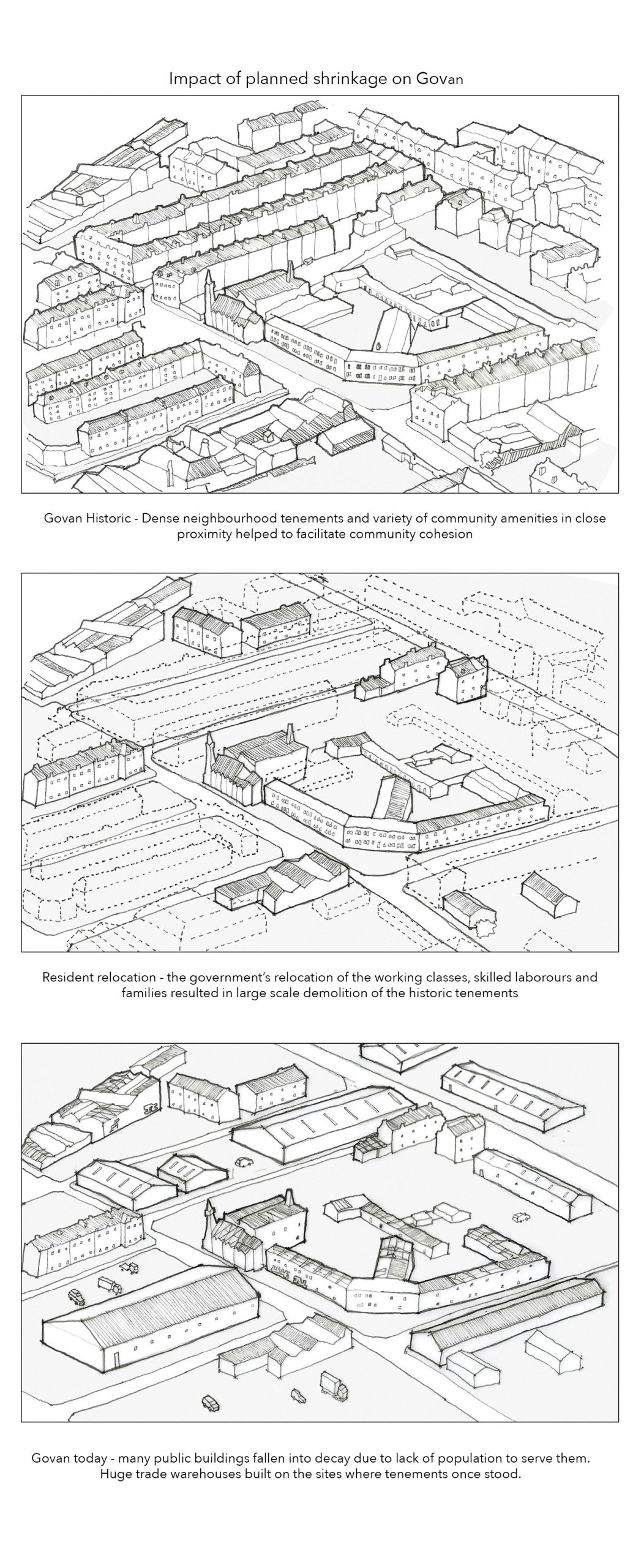After the Second World War, Glasgow was experiencing mass overcrowding. From the 1940s, the government encouraged much of Glasgow’s population to move to newly formed satellite towns such East Kilbride and Cumbernauld. These attracted predominantly middle-income families and the city’s skilled labour force. At the same time, vast numbers of those living in crowded slum areas were relocated to new housing estates on the city’s peripheries, including Drumchapel, Easterhouse, Castlemilk and Pollock.
As key industries in the city such as shipbuilding began to decline, much of the unique skilled labour force in industrial neighbourhoods such as Govan went with it. This, coupled with the relocation of the slum population, caused dramatic and sudden population shrinkage. Governmental action soon contributed to a population suffering from increasing unemployment and few education opportunities. Many of the remaining public buildings in Govan such as schools and local businesses soon fell into decay due to a lack of population to support them. Huge trade warehouses with few employees have since been built on many of the sites where the old tenements once stood, doing little to solve issues of unemployment and nothing to help regain community cohesion. Increasingly local communities have gained voice in Govan, largely in opposition to authoritarian impositions that have disrupted the community over the last century.
Key Themes: Community, Industry, Land-use


